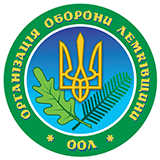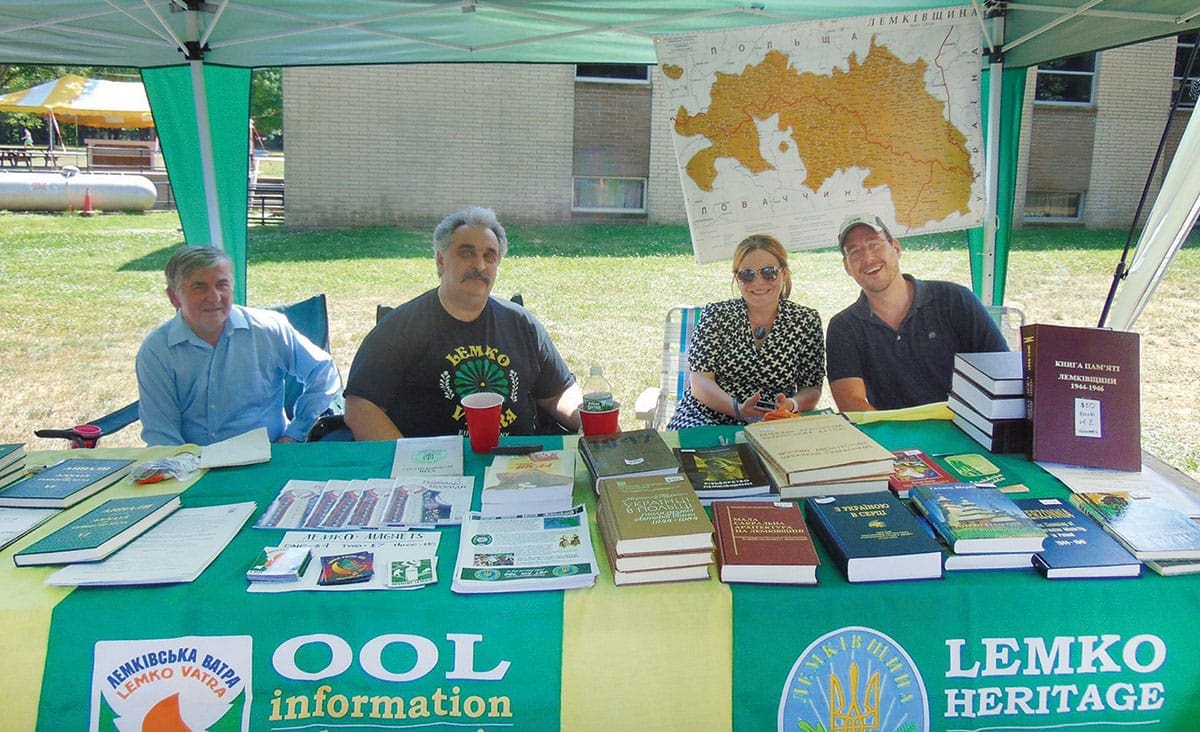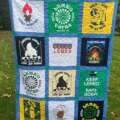As the Soviet regime took over southeastern Poland and western Ukraine in 1944, it implemented a plan to ethnically homogenize these regions and to eradicate widespread Ukrainian patriotic sentiment. They drew a border based on the World War I-era Curzon Line, dividing the new Polish People’s Republic from the Ukrainian Soviet Socialist Republic. All Ukrainians and Poles living on the “wrong” side of the line were slated for deportation to the other side. Despite glowing propaganda about life in the Soviet Union, initially few Ukrainians relocated. The authorities then implemented increasingly violent tactics to coerce resettlement (Operation Rzeszow). Nearly 500,000 Ukrainians were thus resettled from Poland to the Soviet Union in 1944-1946, including tens of thousands of Lemkos. When the Soviet Union refused to take more, the remaining 150,000 Ukrainians were resettled to the northern and western territories of Poland in Akcja Wisła in 1947.
“The Memory Books of Lemkivshchyna 1944-1946” (Knyha Pamiati Lemkivsh-chyny 1944-1946), authored by Dr. Yaroslava Galyk and published with the support of the Lemko Research Foundation in the U.S.A. (LRF) and LRF’s president, Andriy Khomyk, contain the names of those Lemkos who were deported to Ukraine between 1944 and 1946. They are listed according to their original villages of residence. The records contain their full names (with patronyms), year of birth, family relationships within households, and the Ukrainian oblast to which they were resettled. Dr. Galyk obtained these important lists from the original resettlement documents presently located in the State Archives of the Lviv Oblast.
Mike Buryk interviewed Dr. Galyk by e-mail in August of 2016 about her project. Her responses detail the great challenge she undertook to produce this invaluable Ukrainian Lemko genealogical resource. These volumes will be most useful to anyone trying to uncover the trail of their Lemko ancestors who left for Ukraine in the period between 1944 and 1946. They are indeed a written testament for all these families who were violently uprooted from their ancestral lands.
* * *
What is your professional and education background and what motivated you to research and write the “Memory Books of Lemkivshchyna?” Were you or your parents Lemkos? If they were not, what interested you in writing about the Lemkos?
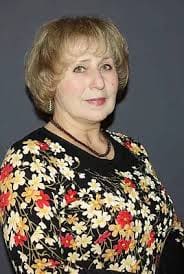
I graduated from the Ivano-Frankivsk Medical College and Chernivtsi State University, Department of Biology. I worked as a nurse, massage therapist, biology and chemistry teacher, guide, medical laboratory assistant and as a director of a boarding house. However, neither my education nor my professional work was the reason why I started to research Lemkivshchyna. I was born and grew up in a family of Lemkos who had been deported from Poland to the Ukrainian SSR in 1945. My parents and my entire large family are Lemkos.
My father, Ivan Danylovych Halyk (Galyk), was from Kryzhivka, and my mother, Stefania Petrivna Repela-Halyk, was from Roztoka Wielka (gmina Łabowa, county Nowosądecki), which is not far from the resort town of Krynica. Throughout my entire life I carried my Mom’s touching stories about Lemkivshchyna in my heart. But it was forbidden to write about such things during the Soviet era. Only at a mature age, when my parents had already passed away, did I realize that I could, and must, describe the tragedy of my family and my people.
In 2009 I published my first book, “Lemkivshchyna is the Land of Our Ancestors.” Later I started writing imaginative literature books, but the subject of Lemkos did not leave me. I was researching the genealogy of my grandmother, Teodora Dziubinska, from Wierchomla Wielka and came across the archival volumes containing lists of the Ukrainian families evicted in 1944-1946. This was how the idea came to me to create the “Memory Books of Lemkivshchyna 1944-1946.”
And now I have become interested in how various influences (religious, political, migratory, etc.) on the life and consciousness of Lemkos developed in the period between the first and second world wars. I’ve already started to write a novel about this. Now I have to continue it. But it requires study and an understanding of that period in Lemkivshchyna.”
Did you put together the information in the State Archives of the Lviv Oblast? How easy or difficult was it working with the archives on this project? Did you need special permission?
To study the history of my family, for quite a while I sent inquiries to the archives in Poltava (where my mother’s family was resettled), Kyiv and Lviv. And I found out that all the materials of the resettlement, including those regarding the relocation of the Lemkos in 1944-1946, based on the agreement between the Polish Committee of National Liberation and the government of the Ukrainian SSR on September 9, 1944, were transferred from Kyiv to the State Archive of the Lviv Oblast. The archives were already open, but I still needed permission to work with the archival books.
Another important barrier was photocopying the materials – I had to pay a fee. Then I appealed to the Lviv Oblast Organization Lemkivshchyna (S. Maykovych) and the Lemko Research Foundation in Lviv (P. Handiak), and thanks to their letters to the archive management I managed to obtain permission to work in the reading room and make copies. By that time I was already a member of the board of the All-Ukrainian Association Lemkivshchyna.
Since I live in the town of Yaremche, which is 200 kilometers away from Lviv, it was not easy to get to the State Archives of the Lviv Oblast and I had to hire an assistant for photocopying (we also had to get the necessary permit for him). Father Dr. Roman Shafran, who serves as priest of the Church of St. Anna in Lviv and my cousin, gave me great spiritual support.
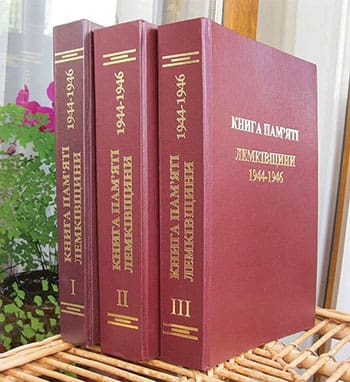
In addition to these difficulties, there was a problem with the archival books themselves, many pages of which had been destroyed by water, torn or erased. The lists were written in illegible handwriting, in Russian and phonetically, relying on the pronunciations of Lemkos whose language was not understandable for the scribes. This is why it was very difficult to make out the surnames. We had to turn to the train lists or alphabetical lists to restore the destroyed surnames and even entire families. Also, because these documents are used to issue certificates of resettlement, the archive staff might have the books in use and we had to wait a long time for them, and experience the dissatisfaction of the archive staff. Also, the result was a huge volume of material, which we had to sort according to administrative units, type into the computer and proofread, and finally create an electronic version of the book and get it to the printers. But now the work is completed and the third volume is being published.
How long did it take to research and write each volume of the book? Did you do all the research yourself?
When in 2013 the idea of the creation of the “Memory Books” of the Lemkos arose, I consulted with various researchers, looked for assistance or support, wrote appeals to Lemkos and non-Lemkos on the Internet and at various festivals, but no one believed that such a voluminous work could actually be completed. I consulted even with the late Ivan Krasovsky. But he could not help me either. Then I turned to the young Lemkos from our family. At first, they helped me with typing on the computer. But they made many mistakes because of their ignorance of Lemko names and so on. The corrections took me too much time. So my son, Andriy Homyn, who grew up among Lemkos in the resettlement collective farm village of Ternovytsia, Ivano-Frankivsk Oblast, where he went to visit my mother every summer, became my best assistant.
By education my son is a socio-economic-geographer (in the Department of Social and Economic Geography), and a graduate from the T. H. Shevchenko Kyiv National University. He helped me in editing the book, especially with territorial division, summary tables, quantitative data, etc. He handled all of the technical editing of the book. The hardest thing was to edit and publish the first volume, which was printed in 2015. The second volume was the largest, so the work took much time, but we already had an incentive – it was necessary to continue what we had begun.
Moreover, I wanted to record and immortalize all of Lemkivshchyna, every person, every Lemko, because my soul ached for each of them. While the second volume was being published (it was completed in spring 2016), my son and I gradually completed the third and final volume. At the end of June 2016, I got it to the printers and I have already received the first proof copies of the book. And the publication is anticipated in the fall of 2016. So, the years of 2013-2016 were three years of continuous work. Three volumes of “Memory Books of Lemkivshchyna 1944-1946.”
Are you pleased with how the books turned out? When do you think the last volume will be available?
Now, since the book is completed, I even cannot believe that I managed to do this, and relatively quickly at that, considering that it was such a large volume of work. And, of course, I thank God for giving me the strength and intellect to implement this really great project. I also thank all the people who contributed a word, some work or some advice to this project.
But I am especially grateful to the Lemko Research Foundation in the U.S.A. and personally to Andriy Khomyk, who genuinely embraced this project of mine, when I submitted it for consideration to the foundation in late 2014. Mr. Khomyk enthusiastically believed in my idea, and as a result I gained financial support for the publication of the book. I also thank him for the wonderful foreword to the book in which he managed to convey the essence of my work.
What do you think your next project will be after the Memory Books of Lemkivshchyna?
I have many plans for the future. It would be good to make an alphabetical index so that the readers could use these books more easily. But this task would be very mundane. I would like to write an artistic work (perhaps a novel) with dialogues in the Lemko language (dialect), so that the reader could enter a Lemko house and family, stay there with Lemkos, and sense the soul of this wonderful, sincere, hard-working people. But this will be another chapter.
But the “Memory Books of Lemkivshchyna 1944-1946” seems like it is my duty to all Lemkos; this is our entire Lemkovyna in a list of names. These people, whether still living or in the other world, are yet all together in our native land, all the Lemko people, each of them in his village or town, near his own house and field… they remain at home.
Mike Buryk is a Ukrainian American writer and speaker whose research focuses on Lemko and Ukrainian genealogy. He is a founding member of Nashi Predky, a Ukrainian genealogy and family history group. Readers may contact him at michael.buryk@verizon.net.
Justin Houser is a fourth-generation Ukrainian American who has a passion for historical and genealogical research and regularly presents on the topic. He is also a member of the Nashi Predky steering committee. He may be contacted at jkhouser84@gmail.com.
Copyright (c) 2016 by Michael J. Buryk and Justin Houser. All rights reserved.

